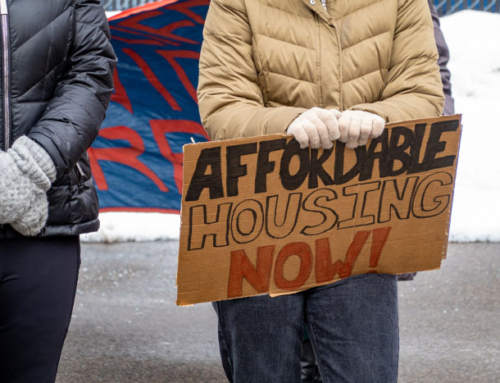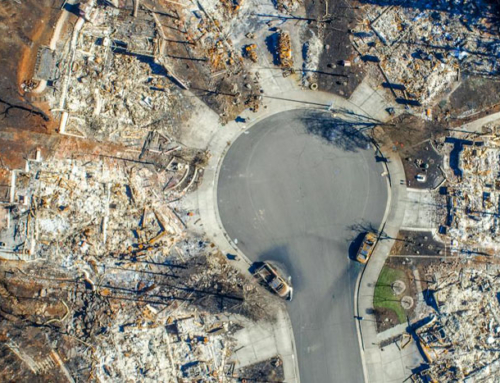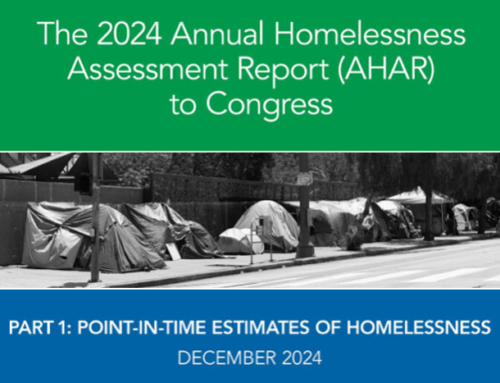Article Contributor: Jacqueline Woo, Senior Associate, Research & Policy
In early May, Governor Newsom announced $3.3B in Behavioral Health Continuum Infrastructure (BHCIP) grant funding for 124 projects across the state, accounting for 213 mental health and/or substance use disorder (SUD) facilities. This funding is part of Proposition 1, the Behavioral Health Services Program and Bond Measure, passed in early 2024. Proposition 1 restructures how individuals who are living on the street and suffering from mental illness can receive care, expands the Mental Health Services Act (MHSA) and renames it to the Behavioral Health Services Act (BHSA), and funds housing for people experiencing homelessness and those with mental health and substance use disorders.
Proposition 1 is the product of two laws passed during the 2023 legislative session— SB 326 (Eggman) and AB 531 (Irwin). As counties and other health and housing stakeholders look forward to and adapt to such funding, LeSar met with former State Senator Susan Eggman, PhD (former D-Stockton), author of one of the two bills that placed Proposition 1 on the ballot, to learn more about what to anticipate from the program. A licensed clinical social worker with a PhD in social work and widely regarded for her advocacy around mental health, Dr. Eggman is a professor of Social Work at California State University (CSU), Sacramento, and an independent consultant.
Here are the key takeaways from the interview.
- The Behavioral Health Services Program is an adaptation of the Mental Health Services Act and a response to the need for housing as a critical mental health intervention, as well as greater accountability.
The MHSA, passed in 2004, directly funded counties’ mental health services, and previously focused spending on community supports and services as well as early intervention and prevention.
According to Dr. Eggman, over the MHSA’s initial duration, housing became seen as a critical intervention: “it became very visible that this was a failed system, particularly in light of the housing crisis we have. Those who were mentally ill and/or had a serious and significant substance abuse issue were very visible on the streets, and we could identify who was going to die next. And this money wasn’t allowed to be used for housing.”
The new BHSA program has two components that fund housing interventions. The first, a $6.4B bond, from which the $3.3 B in Behavioral Health Continuum Infrastructure Program (BHCIP) awards were drawn, develops an array of behavioral health treatment, residential care settings, and supportive housing to help provide appropriate care facilities for Californians experiencing mental health conditions and SUD.
The second component is ongoing BHSA funding, drawn from a 1% tax on individuals earning more than $1 million annually. Ninety percent of the ongoing BHSA funding will be distributed to counties, which will have to spend such funding on three major buckets:
- 30% to housing interventions for people living with serious mental illnesses or SUD
- 35% to behavioral health services and supports
- 35% to full-service partnership programs
Dr. Eggman noted, “housing is a larger component than they had before…the 35% that is going to housing hopefully will be to maintain the housing that is out there, [paying] rent, building another bedroom, maybe putting in some ADA features, things you just need to keep people housed.”
Localities are required to develop a local BHSA 3-Year Integrated Plan, with reporting starting in June 2026. “We also had a lot of pushback from our nonprofits – they’re not going to have the money that they once had for different programs. Now they have to prove their programs work. Those programs can still exist, but there needs to be data on the outcomes that they’re effective so that the county wants to contract with this agency.”
- Counties need to be prepared to apply for future funding, develop plans to receive funding, and coordinate across sectors, including with Managed Care Organizations (MCOs).
Counties need to be prepared to be competitive for future funding: “My county [San Joaquin] just received $137M out of this big tranche of BCHIP funding. They are going to start a wellness compound – they have their piece of ground, they have a contract ready to go. They are ready to go, so they’ll get that, and that is where the majority of that first big tranche of money went to. The next big round that will come out, counties need to start thinking about gaps – what didn’t get funded? What counties still need help? What needs to be done right?” The BCHIP Round 2: Unmet Needs Request for Applications for up to $1.1B in awards is anticipated in May – June 2025. Please reach out to Jacqueline Woo, Senior Associate, Research and Policy, for assistance in structuring applications.
To prepare the local BHSA 3-Year Integrated Plan, counties have been identifying needs — “counties have been going out and having listening tours to gather input”. Counties additionally need to think about who to partner with: “start to think about placement and relationships with nonprofits and housing folks already in the area. Because that’s who you’re going to be working back and forth with again – an iterative process.”
Counties and MCOs additionally need to enable Medicaid billing for community organizations, which traditionally do not have such financial infrastructure. “One MCO in our county is already helping on the ground with programs. Our county started a program to get community health workers trained and tried to build a billing infrastructure for them that fit their community-level work, which is different from hospital settings.”
- The Behavioral Health Services Act funding stream will provide steady funding, mitigating uncertainty in federal and state funding.
Dr. Eggman noted that “if [Federal legislators] cut funding the way they’re saying they will, that will really take a hit. The good news is that the BHSA money will continue to come, so in some ways, this population is a little bit more protected than some of the other populations who rely solely on Medicaid and CalAIM. But CalAIM should work hand-in-hand with our MCOs and counties with BHSA funding.”
- State-level Behavioral Health Services Program funding for workforce development aims to address training and educational gaps in the healthcare system.
The former state senator noted that the Department of Health Care Access and Information (HCAI) will administer such funding, which will likely be allocated towards scholarships and programs that address gaps in the healthcare system. Dr. Eggman specifically identified psychiatric nurse practitioners, psychiatrists, and general practitioners as professions needing more staff. “The idea when we did it was to make sure that people keep getting trained up to the highest level of their degree, so I’m hoping that ramp will still be in place there.”
- Such funding, coupled with CARE Court and conservatorship laws changing, promises to ensure support at every point of the behavioral health continuum.
Dr. Eggman was a coauthor of SB 1338 (2022, Umberg & Eggman), the Community Assistance, Recovery, and Empowerment (CARE) Act, which allows families, clinicians, first responders, and others to refer individuals suffering from schizophrenia spectrum or psychotic disorders. Such individuals will be provided with clinically appropriate, community-based and court-ordered Care Plans consisting of culturally and linguistically competent county mental health and substance use disorder treatment services. SB 43 (Eggman, 2023) expands the definition for those eligible for conservatorship to include people who are unable to provide for their personal safety or necessary medical care due to either severe substance use disorders or serious mental health illnesses.
According to Dr. Eggman, “All this is being implemented over the next three years – being able to have a place where people need to move up, or a place that they need to have to go down, and that nobody falls through the cracks anymore – that’s the goal.”
The LeSar family of firms can assist counties and other stakeholders as they prepare for such funding, either through grant writing; our Capital Mapping Subscription Service, which maps potential funding sources and develops strategies for competitiveness; strategic planning services; serving as an intermediary between MCOs and community-based organizations and supporting Medicaid financial infrastructure services.
Please reach out to Jacqueline Woo, Senior Associate, Policy & Research, for more information. As health, housing, and homelessness continue to become further integrated, our firms’ expertise in these areas throughout California will ensure that clients receive the most leading-edge solutions to their needs.
© LeSar Holdings/LeSar Development Consultants. All Rights Reserved. Please be advised that any republishing of copyrighted material provided by our organization, in whole or in part, requires prior written authorization. For permission, please reach out to [email protected]. We appreciate your understanding and compliance in upholding copyright laws.






















